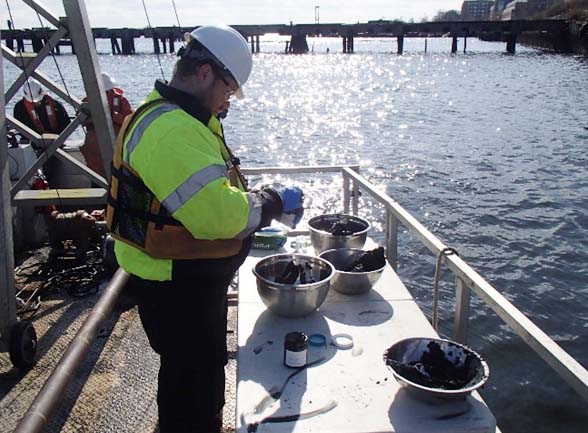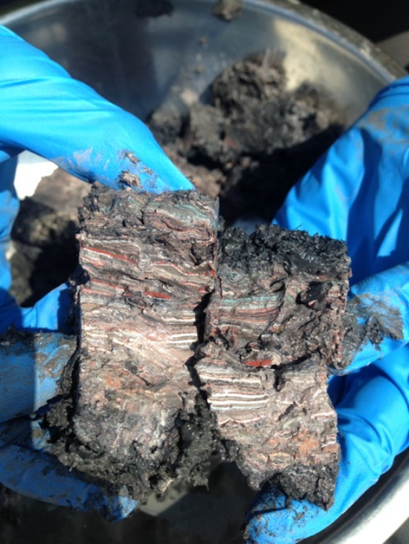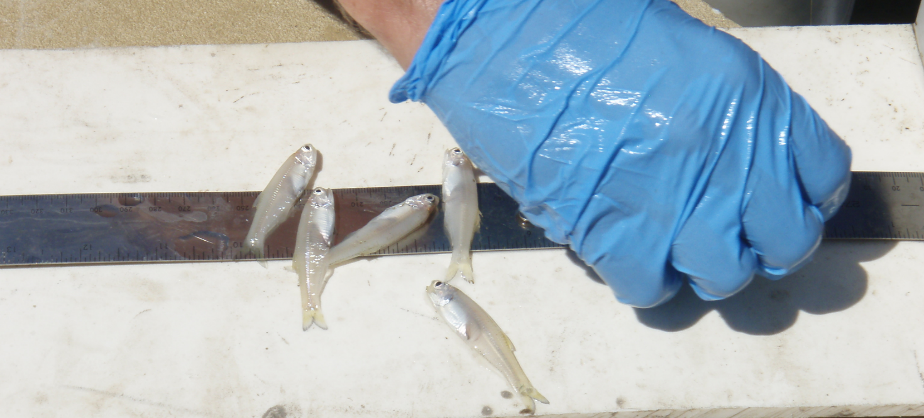Q&A: Sediment Remediation
What strategies are Langan applying to address sediment remediation for its clients?
 Develop a detailed Conceptual Site Model to account for complicated inputs.
Develop a detailed Conceptual Site Model to account for complicated inputs.
Urban waterways are typically impacted from point sources (direct discharges, combined sewer outfalls, industrial waste) and non-point sources (rainfall, snowmelt, eroding streambanks, excess fertilizers, herbicides, insecticides), and may include legacy and on-going contaminant inputs. Therefore, it is imperative that a comprehensive conceptual site model (CSM) be developed in the early stages of environmental investigations, particularly waterfront property. A CSM is the detailed blueprint that identifies potential sources of impacts, contaminants of potential ecological concern, and potential migration pathways between sources and non-human receptors (waterways in this case). Given that urban waterways usually have multiple source contributions, it is extremely important that environmental investigations in these aquatic environments focus on understanding background sources, both upland and in-water, as part of a CSM.

Identify background and ongoing sources to target remedial efforts.
Many upland and in-water sources are contributors of pollution in waterways, ultimately mixing in the water column and settling within the sediment bed. Sediments are heterogenous in nature and act as sources and sinks for contamination that is transported through the water column. Therefore, contaminated sediments can be transported long distances to and from sites. As a result, environmental investigations in urban waterways can be complex, challenging, and costly. The ability to decipher one’s contribution of impacts in a waterway from other on-going off-site source contributions is critical and a necessary early consideration in these investigations. Langan’s ecological risk assessment experts are skilled at conducting in-depth quantitative background investigations to support selection and implementation of scientifically defensible, yet practical remedies where resources are not wasted on in-water remedial efforts where uncontrolled, ongoing sources often remain.
Utilize site-specific risk-based end points.
Although background threshold values for urban waterways are often less conservative than default ecological screening criteria, the extent of impacts identified through a comprehensive background analysis may not always result in a manageable extent of impacts for our clients. In these cases, we recommend the implementation of a site-specific, ecologically risk-based approach; wherein, more advanced ecological risk assessment techniques are employed to better assess the true bioavailability of the chemical impacts identified at a site.
Collaborate to achieve expeditious agency approval.
Other physio-chemical factors in an aquatic system can dramatically alter the behavior of chemicals and potentially render contaminants unavailable for biological uptake. Langan is proficient at strategically selecting and integrating the appropriate measurement tools to evaluate ecological exposures and effects in remedial investigations of waterways, and subsequently developing ecological risk-based remediation goals that are generally less conservative than background and default screening criteria. Langan has been successful at development and implementation of ecological risk studies where the goals and exit ramps for the ecological risk assessment are outlined, communicated, and agreed upon with the regulator in advance of the work. Our transparency about our objectives, and upfront communication with the regulators has significantly minimized the potential for these studies to become endless.
 We have been successful at the establishment of risk-based remediation goals that achieve a comparable level of risk reduction through a less aggressive, eco-risk-based remedial approach. Our extensive experience in background investigations and ecological risk assessment techniques has allowed us to expeditiously obtain agency approval of our risk management plans and limits our clients’ remedial obligations in urban waterways.
We have been successful at the establishment of risk-based remediation goals that achieve a comparable level of risk reduction through a less aggressive, eco-risk-based remedial approach. Our extensive experience in background investigations and ecological risk assessment techniques has allowed us to expeditiously obtain agency approval of our risk management plans and limits our clients’ remedial obligations in urban waterways.
